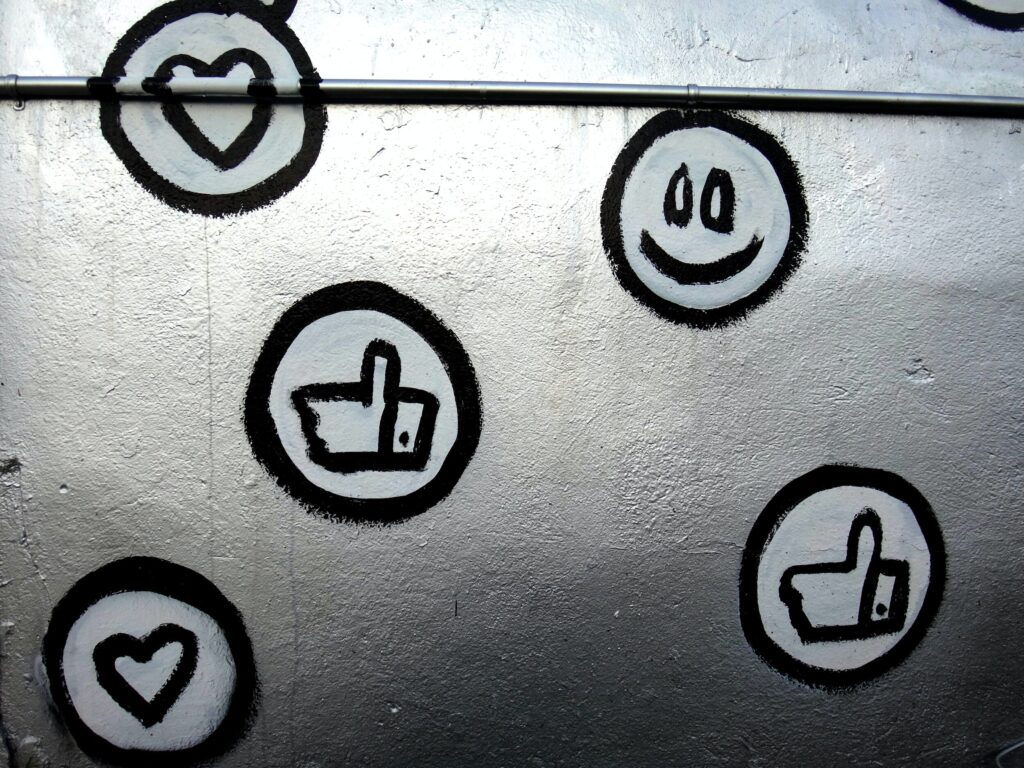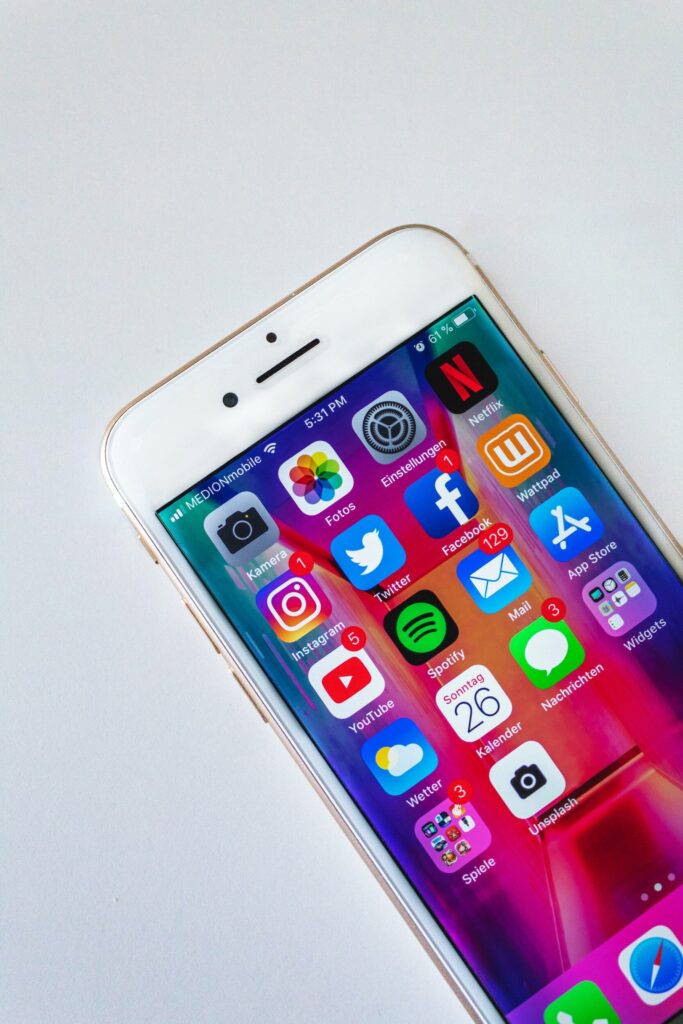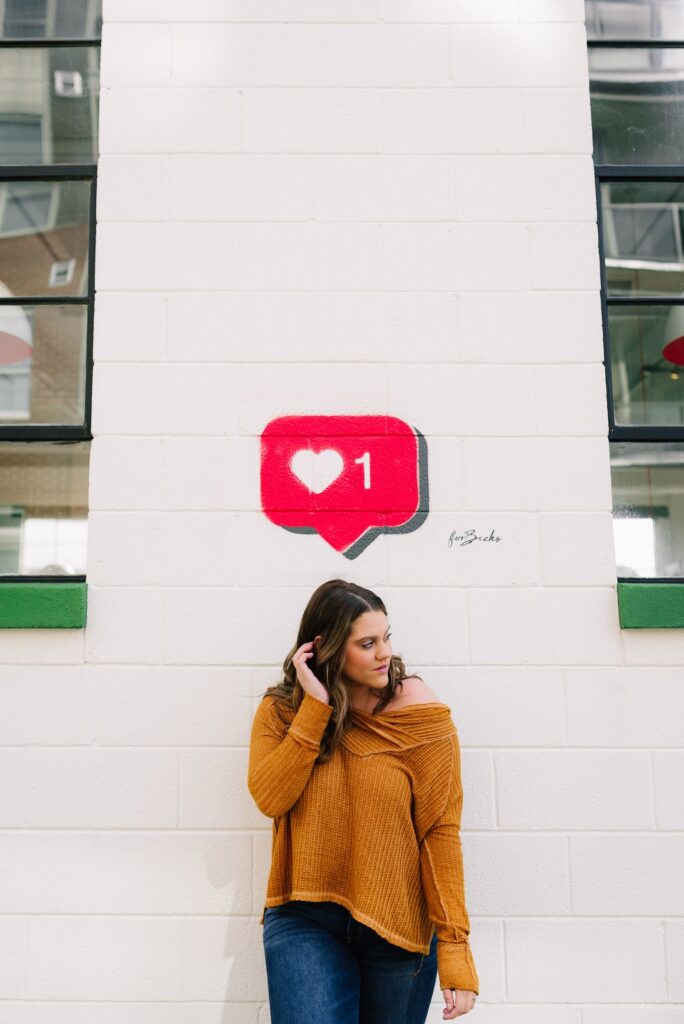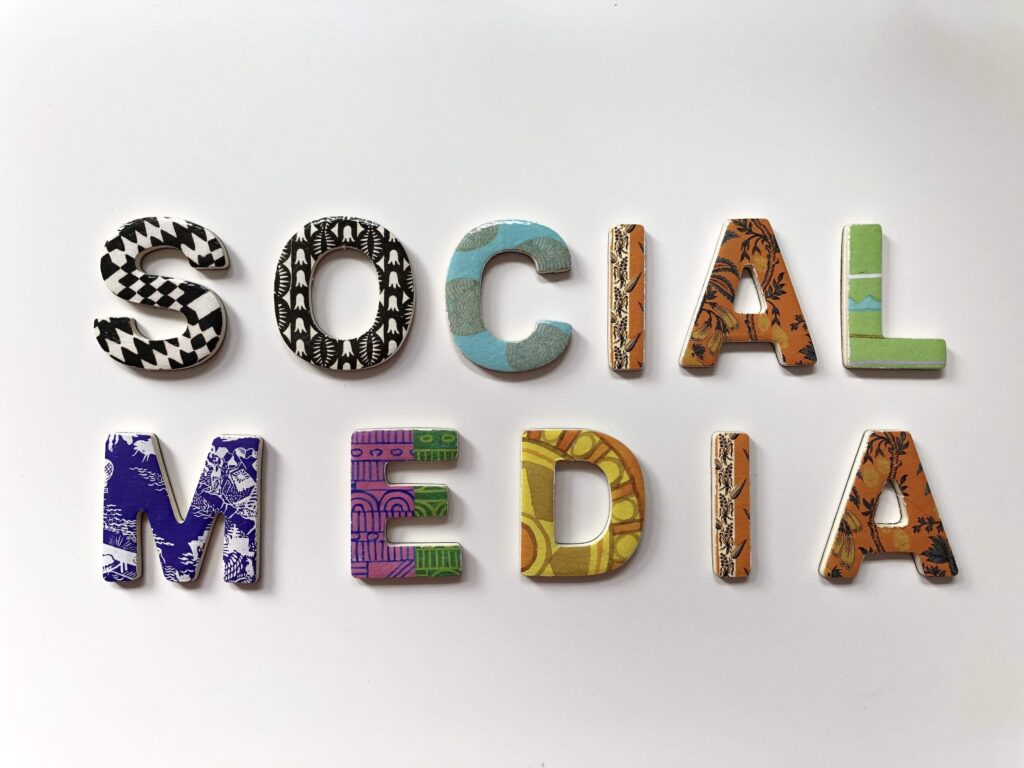
Eating disorders occur when one’s eating behavior is altered in a manner that adversely affects their mental and/or physical health. Experts have found significant evidence that links social media use with the onset or perpetuation of eating disorders.
A variety of studies and sources have indicated that the rising number of individuals struggling with eating disorders might actually be related to the increase in people’s use of social media.
Who’s on Social Media Anyway?
The reality is that almost everyone in the United States is on social media nowadays. Especially after the pandemic, social media use increase even more due to lockdowns and travel restrictions that encouraged individuals to turn to online communities and alternative methods of communication.
Social media platforms like Facebook, Twitter, YouTube, Instagram, and TikTok as well as “fallen giants” like MySpace and Vine allow Internet users or “netizens” to connect and communicate with one another anywhere through status updates, tweets, pictures, and videos.
The role of social media in eating disorder development can be significant. Because social media can be so ubiquitous and pervasive in everyday modern life, the influence often goes unseen or misunderstood.
The numbers and statistics below provided by the Pew Research Center paint a clearer picture on how influential and powerful these social media platforms truly are.

In the U.S. alone, Facebook is used by 69 percent of American adults.
- 73 percent of American adults use YouTube.
- 75 percent of young American adults aged 18 to 24 years of age use Instagram.
- 73 percent of young American adults aged 18 to 24 years of age use Snapchat as well.
- The majority of Americans have active social media accounts, which means they use them often and spend a lot of time online.
- 74 percent of American adults use Facebook every day, with 51 percent visiting the website several times each day.
- About 77 percent of Snapchat and Instagram users aged 18 to 24 years of age use the mobile apps several times each day too.

The Connection Between Social Media and Eating Disorders
The National Eating Disorder Association conducted a study of women aged 18 to 25 that showed a correlation between using Instagram and increasing their self-objectification and body image issues significantly. Of particular note, this study reported that:
- The patients who developed increased mental issues that could lead to various eating disorders were frequently viewing posts about “Fitspiration” or “Thinspiration.”
- Because Americans spend at least two hours daily on social media, they’re regularly exposed to unrealistic and even photo-manipulated standards of beauty.
- Americans are also bombarded by images, videos, and posts about weight loss, thinspiration, body shaming, diet talk, beauty tips, and more by social media “influencers.”
In a separate social media users’ study, there’s additional evidence that higher usage of Instagram is associated with greater prevalence of orthorexia symptoms.
The main link between the influence of social media and eating disorders is that social media activity can lead to the development of eating disorders over time because of its impact on a person’s mental health and by transforming or distorting the way that people view themselves and their bodies.
In particular, young adults and adolescents can put far too much stock on how they’re perceived on the Internet, leading them to develop mental health issues and body image problems from trying to keep up with social media facades.
How Social Media Impacts Those with Eating Disorders
Social media allows people to share everything about themselves, making it a tool for influencing people (hence popular users being called “influencers”) and placing value on unrealistic perfection and unachievable fake beauty in a multitude of ways.
BODY IMAGE ISSUES AND SOCIAL MEDIA
The primary contributing factor to altered eating behaviors among the youth is linked with dissatisfaction with their body shape or weight. According to research, young girls are among the most affected by such conditions.
SOCIAL MEDIA PHOTO COMPARISONS
There’s a positive association between a higher risk of eating disorder development and avoiding posting photos on social media, investing a lot of time and effort in posting photos on social media, and indulging in photo manipulation as well.
SOCIAL MEDIA USAGE AND EATING DISORDER RISK
According to a study involving middle school students, the possibility of spending too much time on social media also has been linked to increased risk of eating disorder development.
PHOTO-BASED SOCIAL MEDIA
The social media platforms that are most highly favored among youth require users to communicate with each other through the use of videos and photos. The risk of eating disorder development can be predicted by adolescent exposure to photo-based social media activities.
The personal “oversharing” involved with social media can negatively impact one’s self-esteem, body image, and so forth. Users can also obsess over likes or comments, using them as means of validation or fuel to the fire of an eating disorder.
Three Factors that Allow Social Media to Influence Eating Disorder Risk
The first step to safeguarding oneself against the pressures of social media is by being aware or mindful of its toxicity and how unreal it is. Viewing “perfect” yet manipulated images set unrealistic standards of beauty that are only achievable with Adobe Photoshop or other Instagram filters.
Teenagers and young adults are advised to watch out for the following social media “norms” or aspects that can lead to increased body image issues and eating disorder risk:
BODY OBJECTIFICATION
Photos posted on social media, many of them manipulated in order to reach some sort of unrealistic beauty or body standard, can influence how users of these platforms seek validation, likes, approval, comments, and views on social media.
They might equate online popularity and attention as validation of their self-worth when it’s anything but. Eating disorder treatment centers now work with patients on a regular basis who have used social media to determine when and what they eat or don’t eat. Social media selfies can also send the message to youths that beauty determines self-worth.
COMPARISON
Social media by nature compels people to compare themselves to others through their photos, videos, or likes. Some might even judge themselves against others based on what they post on their Facebook feed, which merely highlights reels of their vacation photos, career milestones, and other symbols of happiness and success and is not an accurate depiction of reality. This is a very curated and often distorted view of daily or “normal” life.
People in the depths of conditions like anorexia, bulimia, orthorexia, or binge-eating can end up comparing their body image to those put up on social media, often resulting in their condition worsening due to increased body obsession, negative body image, and shame.
TRIGGERS
People in recovery from eating disorders may experience “triggers” that lead to potential relapsing into the thoughts and behaviors that they are attempting to overcome. Patients often report triggers stemming from posts about unrealistic imagery of body sizes, unrealistic standards of beauty, dieting, workout routines, and weight loss.
For instance, there are a number of before and after weight loss photos that trigger the impulse or even compulsion of those who struggle with eating disorders to lose weight or otherwise change their bodies in order to fit those standards.
Awareness that social media content might be a façade of happiness and contentment is the key towards avoiding comparisons. Realize that people posting might conceal their issues with a veneer or mask of how wonderful they wish to project their lives to be.
In contemporary treatment of eating disorders, patients are educated on body neutrality and body positivity as ways to defend themselves against social media negativity and the stress associated with it.

Explaining the Most Common Eating Disorders
Eating disorders are serious conditions with potentially fatal consequences. They’re often linked with severe changes and disturbances in a person’s eating pattern or behavior. The majority of eating disorder cases involve patients overthinking their food consumption, body weight, and body shape as a way to cope with their negative body image or self image.
Eating disorders or ED symptoms most commonly develop during one’s teenage years, but eating disorders can occur at any age. The most common eating disorders include anorexia nervosa, bulimia nervosa, and binge-eating disorder.
When a person alters their eating behavior drastically, it can result in significant mental, emotional, and physical imbalances and greatly impact one’s ability to safely and skillfully navigate life.
WHAT IS ANOREXIA NERVOSA?
This condition involves patients restricting or limiting their food consumption for fear of gaining weight. This may result in health complications due to low body weight loss or other nutritional deficiency. A major contributing factor is having an inaccurate perception about one’s body shape or weight (otherwise known as body dysmorphia). In the setting of social media kids and teenagers may develop an aversion to weight gain due to online peer pressure to be or stay “thin,” equating thinnes with attractiveness or an ideal.
WHAT IS BULIMIA NERVOSA?
Bulimia is a condition that typically involves individuals eating a large amount of food in an episodic manner then using forced vomiting, overexercise, or laxatives afterwards. Bulimia’s episodic uncontrolled binge eating typically results in the patient feeling guilty enough to stop eating, use laxatives, induce vomiting, or exercise excessively to make up for overeating. People who have bulimia tend to have either a normal body weight or are slightly overweight.
WHAT IS BINGE-EATING DISORDER?
Binge-eating disorder is when a person consumes a large amount of food or calories in a short amount of time, but doesn’t engage in any compensatory behaviors like a person with bulimia would attempt to do. This disorder could result in weight gain, significant emotional disturbance, and other challenging feelings or health complications.
WHAT IS ORTHOREXIA NERVOSA?
Orthorexia nervosa involves an obsession with “healthy eating,” resulting in restrictive and food selectivity to the point that one may experience a poor quality of life, loss of relationships, or malnourishment.
One of the Greatest Communication Tools of All Time
Social media has revolutionized the manner by which everyone communicates with one another, from connecting with friends and family via Facebook or networking with coworkers, bosses, managers and companies with LinkedIn.
So the saying goes, however, with great power comes great responsibility. It’s exactly because of this that the role of social media in eating disorder development should not be underestimated.
The Negative Consequences of Social Media
Social media is also powerful enough to induce mental and psychological harm, particularly with those who already suffer from eating disorders and/or have body image issues.
EXPOSES YOUR LIFE IN FULL DISPLAY
Social media is where your life can end up in full display, especially if your Twitter feed is linked to your real-life Facebook account. Strangers can get to see your life, judge it, and post critical comments about your photos, which can put pressure on users to appear or be different from who or how they truly are.
NEGATIVE IMPACTS ON INDIVIDUALS IN EATING DISORDER RECOVERY
Using social media can be detrimental to the mental health of recovering patients with eating disorder issues. More often than not, social media hurts rather than helps the patient’s attempts at recovering from their eating disorder issues. That said, there are many social media accounts that offer recovery inspiration and hope for those in recovery.
You can learn more about those resources here.
TAKING RESPONSIBILITY
Responsible and restrained social media use should be observed in order to avoid compromising one’s mental health.
Even though social media alone usually doesn’t directly cause eating disorder development, studies show their significant role in worsening the issues of those susceptible to such disorders along with co-occurring issues such as depression and anxiety.
How to Minimize Eating Disorder Risk from Social Media’s Toxic Influence
Patients who suffer from eating disorders should remember they’re never alone. They have friends, family, and other support systems that should catch them if they fall.
Also, in order to mitigate your eating disorder risk while using social media, follow these helpful tips.
PRACTICE MINDFULNESS
Be mindful that social media is all about fakery and be careful of who you follow there. It’s okay to follow fitness and food blogs or pages. However, follow the ones with healthy practices.
POSITIVE AND HEALTHY INFORMATION
Go for users who promote positive values, healthy information, and are true motivators. Avoid those who project unrealistic beauty standards that make you hate yourself.
USE YOUR UNFOLLOW BUTTON
Unfollow any user that makes you feel undervalued, overwhelmed, or is pushing you towards unhealthy activities related to eating disorders. You don’t have to live up to their expectations or the expectations of others on social media.
DON’T FEED THE TROLLS!
Some bored individuals or “trolls” will say the meanest, nastiest, and most toxic things to elicit a reaction from you to amuse themselves. Don’t fall for their bait and feel free to block them if they’re body-shaming you to the point of harassment.
WATCH OUT FOR YOURSELF
Watch out for your wellbeing. Many influencers and social media pages get their likes and followers by using the same tactics beauty products use to sell themselves—by making you feel like you’re not enough.
REMEMBER, SOCIAL MEDIA ISN’T REAL!
You’ll see this disclaimer often in social media and it should ring true to you. Social media isn’t real. Twitter isn’t real. Facebook isn’t real. Instagram isn’t real. Don’t take it too seriously.
There also exist rehabilitation and treatment facilities specifically developed to help those struggling with these disorders. Patients should specifically seek help from these centers as soon as possible to mitigate any potential complications.
‘Ai Pono Hawaii offers a comprehensive care plan for rehabilitating eating disorders and co-occurring disorders. They should also improve the patient’s chances of lasting recovery and mitigate relapses. Our tranquil rehab center has also been offering successful holistic treatment for eating disorders such as anorexia nervosa, bulimia, binge eating disorder, avoidant/restrictive food intake disorder (ARFID), pica, orthorexia, and other specified eating and feeding disorder (OSFED).
